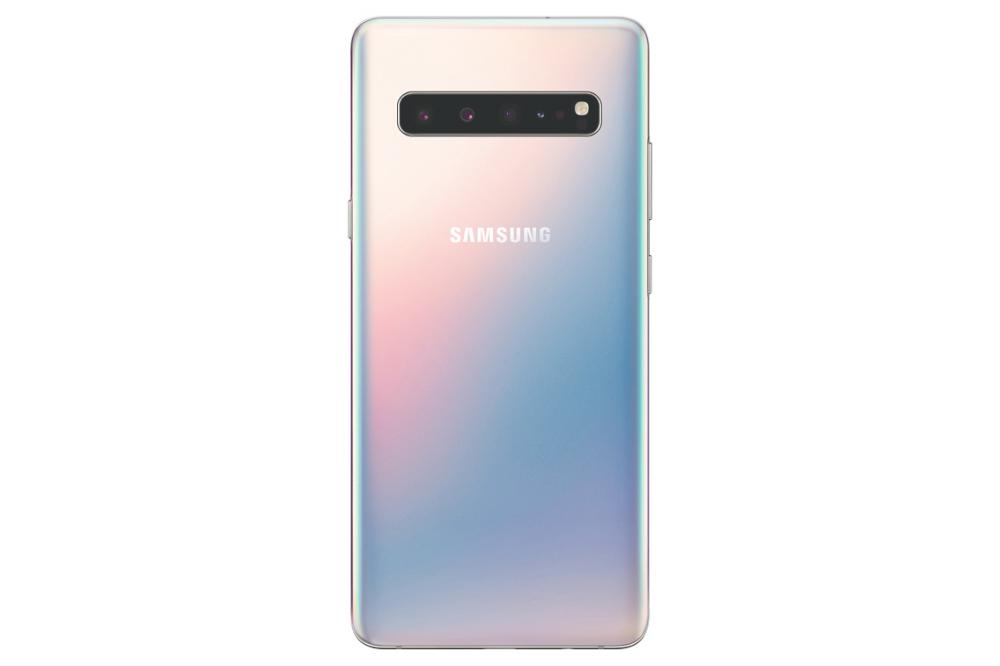SAMSUNG celebrated 10 years of its Galaxy brand by releasing three variants of the Galaxy S10, which include the standard S10, the more price-friendly S10e, and the cream of the crop – the S10+.
For this review, I have been using a prism white Samsung Galaxy S10+ for the past two weeks as one of my primary devices, and have been continuously comparing it to my own dependable workhorse, the Samsung Galaxy Note 9.
There is no doubt that S10+ has a better screen.
Although the display on both the S10+ and the Note 9 measures the same diagonally at 6.5in, the S10+ has a longer and more high-density 19:9 aspect ratio display.
The S10+ also uses the brand-new Dynamic Amoled technology.
We may have thought we’d seen the best before, but this is even better: the display on the S10+ looks just simply gorgeous.
Samsung seems to be able to push the envelope further every year with each new flagship phone.
However, to experience the S10+’s full display capabilities, you have to bump up the resolution in the settings manually.
I got mixed feelings about this old habit of Samsung’s.
On one hand, lower resolution equals longer battery life, but on the other, we want that full 1440x3040 pixel resolution.
When it comes to looks, the S10+ follows the same primary design language that we’ve seen with the Galaxy S9 series and Note 9.
We see the same overflowing front and back panels that curve around and sandwiches a smooth metal band – with some changes of course.
Because the S10+ has an on-screen ultrasonic fingerprint reader and uses an elongated punch hole design to house its front-facing cameras, the overall look of the S10+ is cleaner.
The phone’s smooth back panel is only interrupted by the camera bump, which houses three cameras.
The reduced bezels make the S10+ so small that it could fit inside a Note 9. At the same time, the smaller form makes the potential added millimetres from a protective case – which I feel is a must for this device – less pronounced.
Even the thickest case would add little bulk to the svelte S10+.
The S10+ also comes in more colours than the Note 9. Currently, the S10+ offers prism white, prism black, prism green, ceramic black, and ceramic white.
However, these choices lack the variety the Note 9 has with its ocean blue, midnight black, lavender purple, and metallic copper colours.
Both the front and rear array of cameras of the S10+ managed to impress me. There are five cameras on the smartphone overall.
The three cameras at the back have three different, handy focal lengths.
What makes them stand out is how the image quality of all three cameras are near equal to each other.
There are some differences in specifications between the three, but for non-technical folks, they all look equally good: zoom, wide, or anywhere in between.
Pictures taken with the S10+ look pleasing with excellent colours, beautiful lens effects, and a little tasteful pop and sharpness that catches the eye in social media posts.
Performance in low light is a notch below excellent, and the natural bokeh is a tad harsh.
But, those are minor gripes.
There are two front-facing cameras. You can switch between the two, but I can’t see much of a difference.
What I can see is that the S10+ has the best selfie camera I have ever tested.
With filters and beautification mode turned off, the selfies are comparable to pictures taken with a rear-facing camera – pleasant, realistic, and with a notable clarity that I haven’t seen before.
The S10+ is not for selfie-takers who prefer looking like computer-generated, clay-faced characters taken with a vaseline-coated camera.
But, if you still want to look like a CG character, there is a new and improved AR Emoji function. It’s still novel – and impractical.
When it comes to performance, the S10+ has a bigger battery, more RAM, and a newer processor compared to the Note 9.
So you can imagine how well it runs Android 9.0 Pie with Samsung’s One UI.
It even has the Digital Wellbeing option that most Android 9.0 Pie native smartphones have, and which the Note 9 does not.
With only two weeks of experience with the S10+, I would recommend it to anyone who is looking for the best high-end flagship in the market.
Its many practical features, plus the Samsung services ecosystem, such as Samsung Pay, are the cherries on the cake.
But at RM3,699 (RM4,599 for the ceramic version), the Galaxy S10e (RM2,699) may be the more practical option for everyone else.










